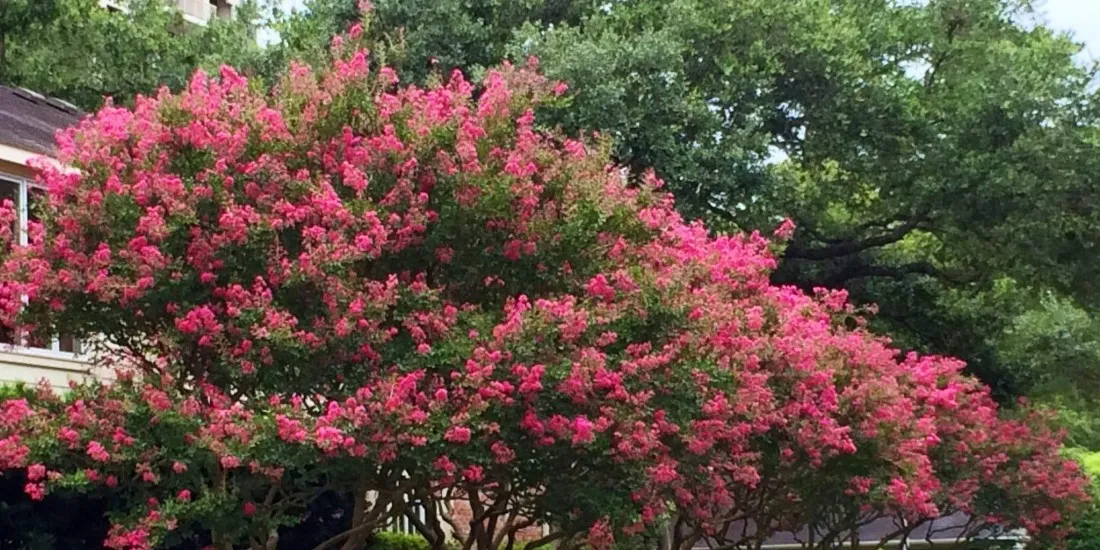When and how should I trim my crape myrtles is one of the most common questions we see from clients year after year. These trees are a staple in Gainesville, FL landscapes, and for good reason! This long-blooming tree performs extremely well in our climate and features beautiful bark, graceful flowers, and even a bit of fall color when its leaves drop in the fall. A well maintained crape myrtle will deliver months of stunning blooms and, once established, requires little to no supplemental irrigation. What’s not to love?
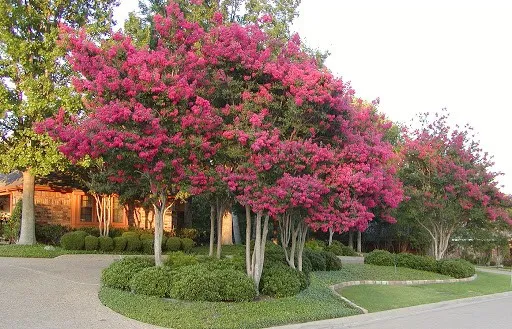
When to trim a Crape Myrtle in Gainesville?
Many think that the right time to trim a crape is in the fall, once it loses its leaves. The smaller suckers and young growth may look unsightly and a neat, trim appearance while the tree is bare can be desired. In our climate we see cold snaps followed by days and weeks that are warm, and a freshly pruned tree is primed to deliver new growth. That new growth is incredibly tender and when another frost or freeze comes around, it could cause stunting and damage to the health of the tree.
In Gainesville, the best time to trim crapes in is just before spring, once the risk of freezing temperatures passes and just before new growth emerges.
What is Crape Murder?
A common phrase you’ll hear when it comes to trimming crapes is “crape murder” and what this means is that the tree has been trimmed in a way that will result in a less aesthetically appealing structure. These are very resilient trees and this type of pruning is not likely to kill it, but it is incredibly difficult, often impossible, to get the tree back to the graceful form it is intended to have.
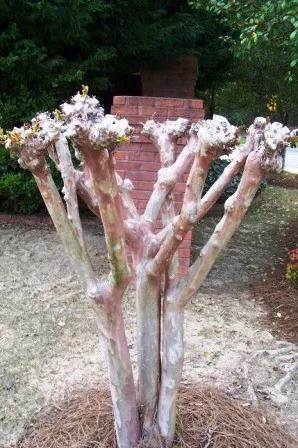
For the health of the tree and for the long term blooms, it is actually better to leave them untrimmed than to prune them improperly.
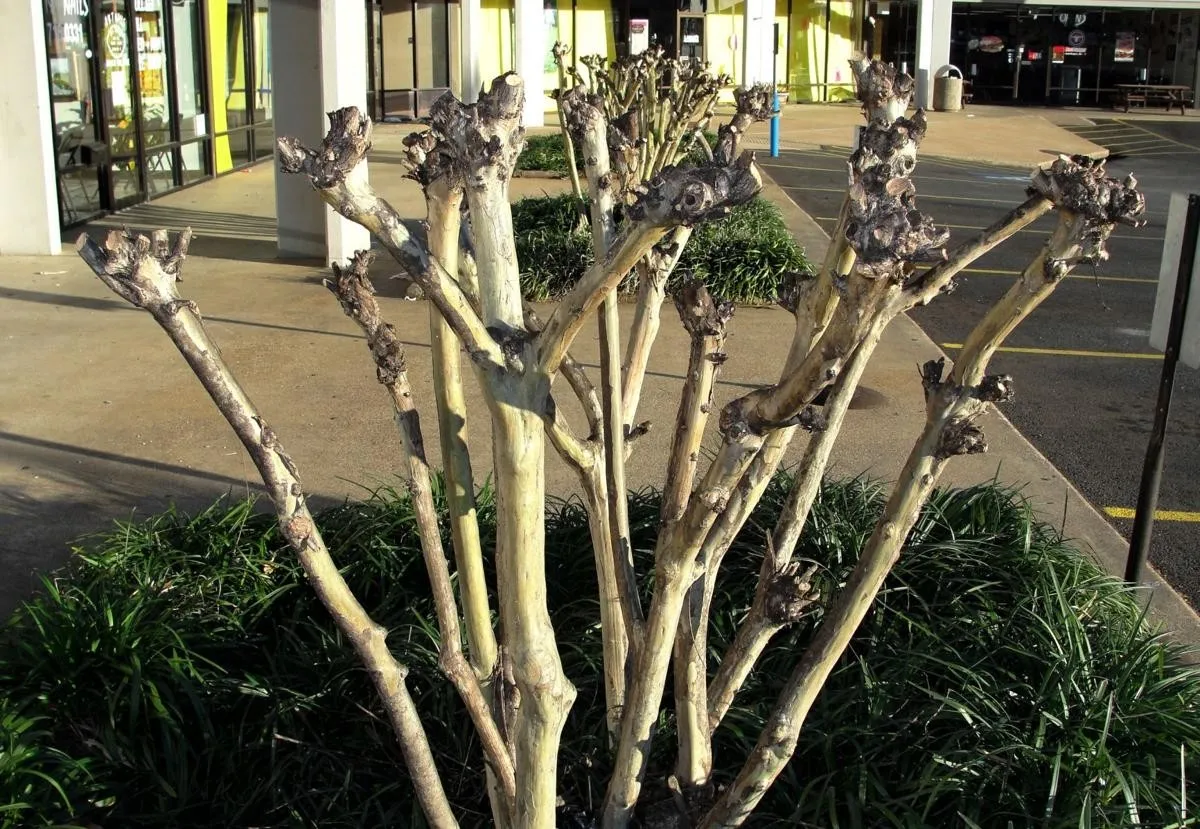
Correct Procedures for Gainesville Crape Myrtle Pruning
In this illustration you see a 4-year old crape myrtle tree as it may appear in late winter, when still in dormancy, and before new growth has begun to emerge. This tree has been properly pruned for 3 years. At the top of the branches you will notice seed pods that formed after last season’s blooms. In studying the diagram more closely you might notice where pruning cuts were made in previous years, and that wherever cuts were made two new branches emerged from beneath the cuts.
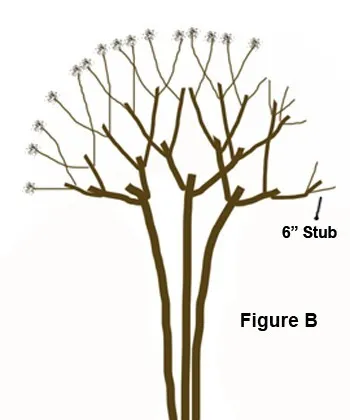
The arrow that says '6" stub' indicates where to make cuts when pruning your crape myrtle tree. The rule of thumb is to trace down from the top of a stem (from the seedpods if the tree bloomed), to where that stem meets a branch. Using a pair of sharp bypass or lopper pruners make a cut about 8 to 12 inches or so above the intersection - never below the branching point.
Alternatively, you can grab the tip of stem and bend it over, making your cut right at the point where the stem starts to bend. The remaining branch should be strong enough to support the new branches that emerge just below your cut. Repeat this process until all stems have been cut as is shown on the right side of this diagram.
By using this method of pruning you will be promoting a fuller canopy and an increase in the number of blooms. For a nice and tidy appearance you can prune suckers (small branches) that grew from the trunk base, and any twiggy growth that emerged up and along the main trunks.
The Right Tree in the Right Place
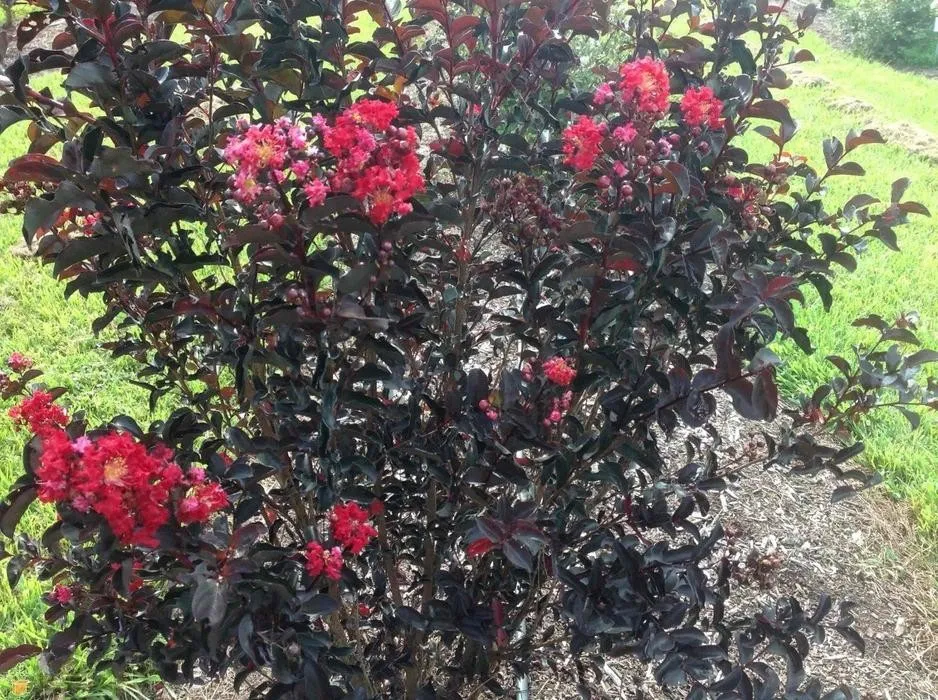
One of the most common reasons that we see crape murder occur is because the wrong variety of crape was planted too close to a home, structure, or other existing trees. It’s important to know that crapes range in mature size from diminutive dwarf varieties no larger than a shrub, to large trees 20-30 feet tall. If you are planning on installing a new crape in Gainesville, make sure to select a variety that will be the size appropriate to its location when full grown. This is minimize the amount of pruning needed as time passes, and ensure that a beautiful tree does not have to be removed for being too close to your home.
If pruned the right way and right time, you'll enjoy one of the most beautiful trees in Gainesville landscaping for years to come!


